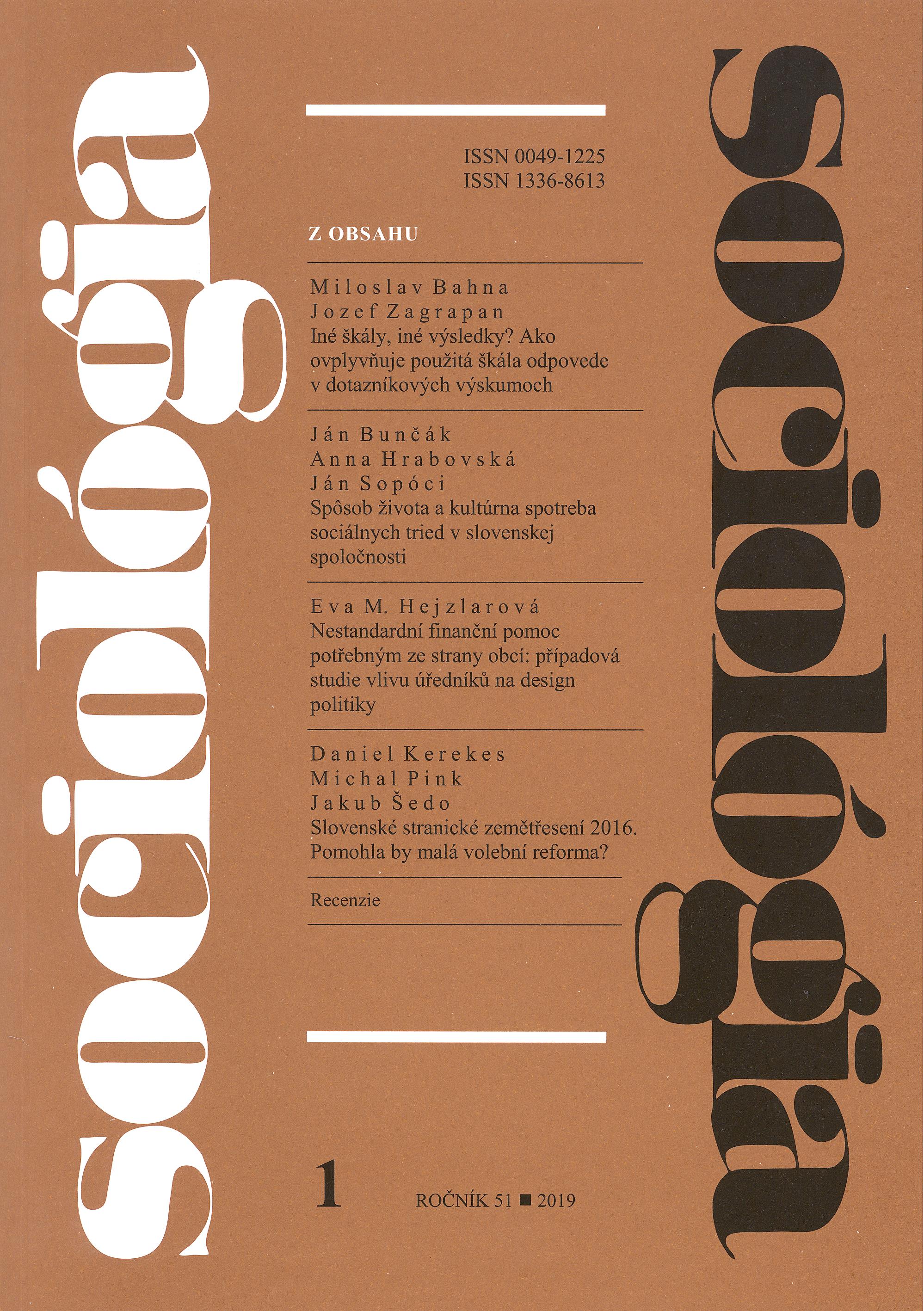Iné škály, iné výsledky? Ako ovplyvňuje použitá škála odpovede v dotazníkových výskumoch
Different Scales, Different Results? How are Survey Responses Influenced by the Employed Scales
Author(s): Miloslav Bahna, Jozef ZagrapanSubject(s): Social Sciences, Evaluation research
Published by: Sociologický ústav - Slovenská akadémia vied
Keywords: Split ballot experiment; end labeling; full labeling; intensity hypothesis; familiarity hypothesis;
Summary/Abstract: Different Scales, Different Results? How are Survey Responses Influenced by the Employed Scales. The paper analyses the results of a series of split ballot experiments included in three representative surveys fielded in 2016 and 2017. The focus of the experiments is to compare alternative versions of various scales to test the validity of the intensity hypothesis and to compare fully labeled scales with end labeled ones in a Slovak language questionnaire. We find strong support in favor of the intensity hypothesis observing less answers to the more intensely formulated answer categories in the tested rating scales. It seems, however, that to identify the effect on a five categories agree – disagree scale reliably, a sample larger than N = 1200 is necessary. Thought relatively small, the effect becomes more notable if respondents tend to choose answers mostly towards the scale endpoints. We demonstrate how multivariate analysis results can be substantially influenced by minor scale modifications. Our experiment comparing a fully labeled scale to an end labeled scale supports the hypothesis that end labeled scales make the endpoints more salient and are more often selected by the respondents. Sociológia 2019, Vol. 51 (No. 1: 5-24)
Journal: Sociológia - Slovak Sociological Review
- Issue Year: 51/2019
- Issue No: 1
- Page Range: 5-24
- Page Count: 20
- Language: Slovak

